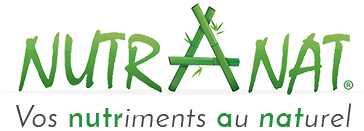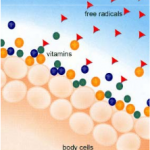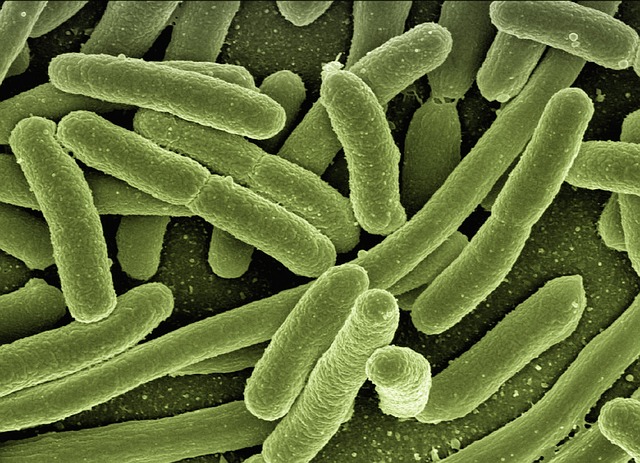Le bon fonctionnement du foie est crucial pour le bon fonctionnement du système immunitaire.
Il faut viser l’amélioration des réactions de méthylation hépatique par exemple via des vitamines et certains nutriments apportés à l’organisme par une supplémentation naturelle dont le corps aura besoin pour les réactions de méthylation s’il ne trouve pas ces nutriments dans votre alimentation quotidienne. La méthylation est une réaction chimique très importante pour la dégradation de l’homocystéine et la détoxication de phase 2 du foie (ainsi moins de fibrose également…)
La législation ne nous autorisant pas à communiquer sur les propriétés de certaines plantes et de certains actifs, nous vous conseillons de consulter la littérature existante pour plus d’informations
L’entretien de la qualité des membranes hépatiques est crucial pour la bonne tenue du métabolisme du foie, chargé en particulier d’éliminer les substances toxiques.
Il faut également viser au bon entretien des membranes des cellules du foie, les hépatocytes constituées elles aussi par une double couche de phospholipides. Les membranes cellulaires hépatiques endommagées sont gérées par les phospholipides, et les membranes en bon état jouent le rôle de barrières sélectives, permettant l’entrée des nutriments dans la cellule mais bloquant celle des toxines.
L ‘intérêt d’un foie en santé pour l’immunité
Cellules immunocompétentes du foie :
Le foie humain adulte contient normalement un nombre considérable de cellules immunocompétentes estimé à 1010 (fonction hématopoïétique du foie adulte). Le foie est une vaste usine de synthèse et de dégradation placée sur la circulation porte. Mais il doit aussi être considéré comme un organe lymphoïde capable de générer et d’activer des cellules lymphocytaires très hétérogènes, donc organe de la lymphopoièse. Certaines sont des lymphocytes T , lymphocytes T cd, lymphocytes NK et cellules de Kupffer.
Le foie contient majoritairement des cellules de l’immunité naturelle qui lui permettent d’assurer son rôle de première ligne de défense vis-à-vis des molécules du tube digestif véhiculées par le système porte.
A noter : le thymus partage une origine embryologique commune avec l’épithélium des canalicules biliaires, soulignant l’hypothèse d’une participation de cet épithélium à un environnement favorable pour une maturation lymphocytaire extrathymique.
Références et sources :
. Aleynik MK & al Polyenylphosphatidylcholine prevents carbon tetrachloride-induced lipid peroxidation while it attenuates liver fibrosis. J Hepatol.1997;27:554-61.
• Ma X & al. Polyenylphosphatidylcholine attenuates non-alcoholic hepatic fibrosis and accelerates its
regression.
J Hepatol 1996 ; 24:604-13.
• Akhundzhanova LL & al. Membrane-stabilizing effect of phospholipid liposomes in toxic hepatitis.
Klin Lab Diagn.2002;52-3.
• Barbarino F & al. Effect of esstial phospholipids in experimental D-galactosamine-induced liver cell
damage.
Therapiewoche Osterreich 1990; 5:415-19.
• Bartsch GG & al. Influence of phospholipids on liver damage: (I) changes in lipid content and synthesis
after liver damage with carbon tetrachloride and other agents (II) Carbon tetrachloride poisoning and
alterations in amino acid uptake, lipid peroxydation, and lysosomal enzymes.
Acta Hepatogastroenterol 1975; 22:228-236 (I) 178-180 (II)
• Biagi PL & al. The effect of dietary polyenylphosphatidylcholine on microsomal delta-6-desaturase
activity, fatty acid composition, and microviscosity in rat liver under oxidative stress.
J Nutr Biochem, 1993;4:690-94
• Demirbilek S & al. Effects of polyenylphosphatidylcholine on cytokines, nitrite/nitrate levels, antioxi-
dant activity and lipid peroxidation in rats with sepsis.
Intensive Care Med. 2004;30:1974-8.
• Jaeschke & al. Disposition and hepatoprotection by phosphatidylcholine liposomes in mouse liver.
Chem Biol Interact 1987;64(1-2):127-37.
• Buko V & al. Hepatic and pancreatic effects of polyenoylphosphatidylcholine in rats with alloxan-indu-
ced diabetes.
Cell Biochem Funct. 1996; 14:131-37.
• Fuji S & al. Effect of polyphosphatidylcholine on experimentally induced liver disturbances.
Shikoku Acta Med 1974; 30:76-85.
• Lee SH & al. Cytoprotective effects of polyenoylphosphatidylcholine (PPC) on beta-cells during dia-
betic induction by streptozotocin.
J Histochem Cytochem. 2003;51:1005-15.
• Bushma MI & al. The protective action of a combination of essentiale with diethylnicotinamid on rat
liver mono-oxygenases and glucuronyl- and glutathione transferases in a trichloromethane lesion.
Eksp Klin Farmakol. 1994;57:62-3.
• Holecek M & al. Effect of polyunsaturated phosphatidylcholine on liver regeneration onset after hepa-
tectomy in the rat.
Arzneimittelforschung, 1992;42: 337-39.
• Karaman A & al. The effect of essentiale on histones and nucleic acids in liver and blood-forming tis-
sues of rats irradiated with gamma-rays Protective effect of polyunsaturated phosphatidylcholine on liver
damage induced by biliary obstruction in rats.
Radiats Biol Radioecol.1999;39:388-93.
• Kropacova K & al. The influence of essential phospholipids (Essentiale) on liver regeneration in
gamma irradiated rats.
Physiol Res. 1995;44:241-7.
• Lekim D & al. The incorporation of essential phospholipids into the organs of intact and galactosami-
ne intoxicated rats Arzneimittelforschung.
Drug. Res. 1974;24:1217-21.
• Neuberger J & al. Effect of polyinsaturated phosphatidylcholine on immune mediated hepatocyte
damage.
Gut 1988; 24:751-55.
• Saratikov AS & al. The effect of eplir [phosphatidylcholine] on an experimental toxic lesion of the liver.
Farmakol Toksikol.1990;53:42-45.
• Takayama F & al. Effects of anti-free radical interventions on phosphatidylcholine hydroperoxide in
plasma after ischemia-reperfusion in the liver of rats.
Biochem Pharmacol. 1993;46:1749-57.
• Zverinskii IV & al. The action of Essentiale and its combination with cordiamine and vitamin E on the
processes of xenobiotic biotransformation and lipid peroxidation and on liver structure in rats with cho-
lestasis.
Eksp Klin Farmakol. 1998;61:33-6.






